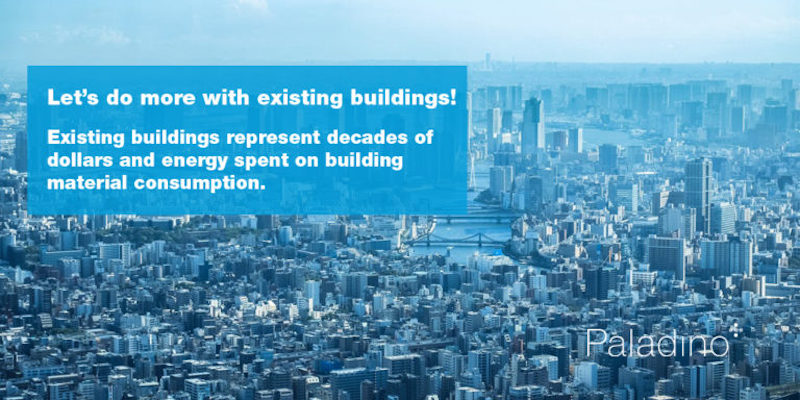Feeling like you’re just settling in to LEED v4? It’s hard to believe that It’s been four years since the U.S. Green Building Council (USGBC) released LEED v4, and now, LEED v4.1, announced last November at Greenbuild, will be released by the USGBC later this year.
And as I reflect on Greenbuild and the articles that have come out summarizing the changes in v4.1, I wonder how much difference v4.1 is going to make.
The largest number of changes in v4.1 affect materials – both in the Materials and Resources (MR) and Indoor Environmental Quality (EQ) categories. Changes to incorporate lessons learned and other administrative alignments is a good thing for the framework but, like the v2.1 release in 2003, hold no incremental improvement for the environment.
To be sure, material optimization is a game-changer for material composition. Paperwork intensity aside, it forces manufacturers to know the composition of their materials/products. However, material composition is just the tip of the iceberg in terms of what manufacturers can do with that information. Will it inspire them to move to ingredients that do something good? The green pioneers of the world hope so. But the lesson has been that we do too little and take too long to do it.
While the Materials and Resources category in v4.1 will retool the Life Cycle Assessment (LCA) approach, I stand by the notion that the most sustainable material is the one not used. We work in a field that consistently consumes upwards of $40 billion annually in building materials–$40 billion! LCA attacks building material consumption through what is called dematerialization. In the simplest terms, dematerialization is using less material to create that widget–using less. We need to do better than that.
A measly 27 projects have pursued this credit since the inception of LEED v4. We can indeed do more with less, but there will always be an entity trying to push to use more. It’s not enough to use the same amount of the same material; this is not behavior change, nor is it a new concept.
Think of the Deer Park water bottle. The company changed the amount of material that goes into the bottle, but did not work to change the bottle consumption. Changing unsustainable production and consumption will take much more than LCA in LEED v4.1 to accomplish. We need a game-changing standard that addresses consumption.

Let’s do more with our existing buildings
Existing buildings represent decades of dollars and energy spent on building material consumption.
While GBCI framework verification represents tactics, performance is where the magic happens. LEED v4.1 EB: O&M will see the most change, and move to be more accessible to aging buildings and tenant fit-out space.
Arc is also improving alignment with LEED for Existing Buildings. Corey Enck, Director of LEED Technical Development at USGBC, says, “For BD+C we would like to reference Arc as the platform where you can track your ongoing performance, and where you can start to pursue ongoing certification.”
Enck also noted that Arc, LEED BD+C, and LEED O+M in some cases use different metrics – and LEED v4.1 is an opportunity to align those. “O+M v4.1 will see the most amount of change,” he says. “With (LEED) 4.1 we will embed Arc and the performance scores into O+M more directly to try to streamline the O+M rating system.”
LEED is the most widely used green building rating system in the world, certifying 2.2 million square feet daily with more than 92,000 participating projects in over 165 countries. The USGBC is expanding its reach and impact through combined strategies of rating system improvement and better collaboration with other systems.
As we learn more about LEED v4.1, we’ll keep you informed. If you have any questions or need help navigating the process, I am here for you!
More from Author
Paladino | Jan 10, 2022
The future of regenerative building is performance-based
Why measuring performance results is so critical, but also easier said than done.
Paladino | May 26, 2021
Injecting embodied carbon capability into the integrated design and construction process
Embodied carbon is defined as the carbon footprint of a material, and is expressed in metric tons of CO2e.
Paladino | May 12, 2021
Climate modeling for a resilient business and future
This post explores changes that developers and their teams need to make to their risk and resilience strategies by climate modeling for climate change.
Paladino | Apr 26, 2021
Building performance requirements are coming: Are you ready?
Building Performance Requirements are trending nationwide and are likely coming to a county near you.
Paladino | Feb 8, 2021
Six lessons learned from our first Fitwel Viral Response Module certification
The Fitwel Viral Response Module is one of several frameworks that real estate owners and operators can use to obtain third-party certification for their efforts ensuring their properties are ready for a safer and healthier return to work.
Paladino | Jan 14, 2021
Shift your energy to carbon
Now is the right and necessary time for the commercial real estate industry to shift its environmental strategy from just energy, a carbon contributor, to carbon itself.
Paladino | Nov 13, 2020
5 tips when designing for daylight
Daylight modeling is a tool to examine how daylight interacts with a building, and how that natural light behaves within interior spaces.
Paladino | Jul 16, 2020
COVID readiness: IWBI and USGBC seek to help businesses quantify risk
In an effort to address the risks of COVID-19 at the building scale, USGBC and IWBI have analyzed existing certification guidelines and drafted new, relevant content.
Paladino | Jun 5, 2020
3 strategies to improve the wellness of building systems and gain tenant trust
Three operational issues that must be prioritized for every building in order to achieve tenant trust are air quality/ventilation, relative humidity, and building commissioning.
















